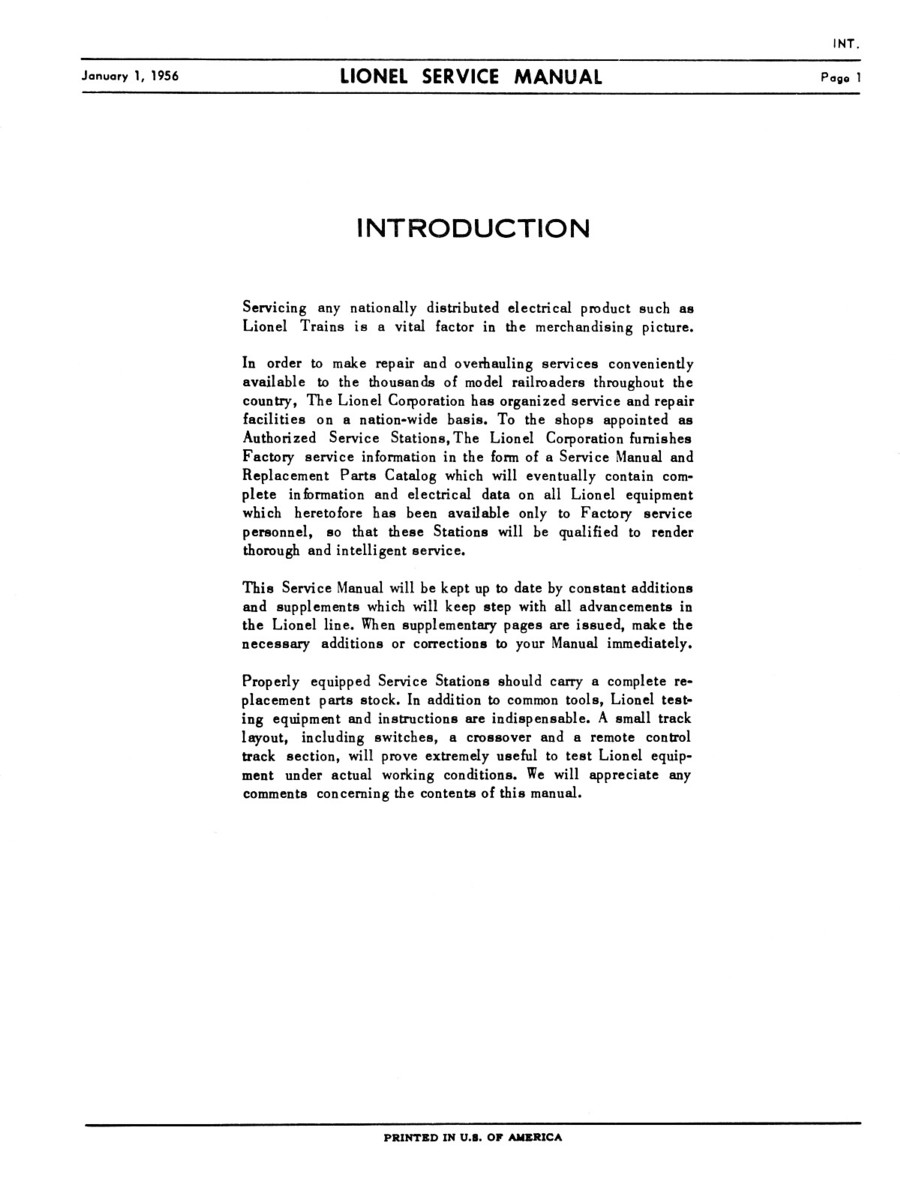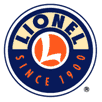


|

|
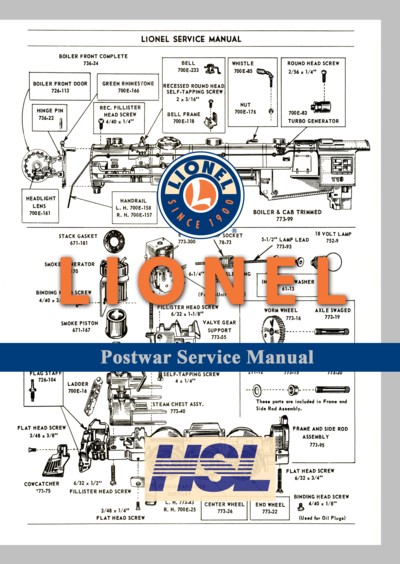
Lionel Postwar Service Manual
The Service Station Network ó Lionel's Key to Customer Satisfaction
by Bill Schmeelk
Since its beginning in the early 1900s, Lionel trains were considerably more complicated than most of the other toys a child might hope for. Perhaps even the word ďtoyĒ does not accurately reflect the product Lionel sold. Lionel trains were different than most toys and were generally expected to function over a longer period of time. Lionel trains were often handed down from one generation to the next. The mechanical complexity may also be one of the key reasons that the product appealed so strongly to the dads of those children fortunate enough to receive the gift of a set of trains. Although children certainly enjoyed operating model trains, surely many of them received a set of trains to satisfy their fatherís desires. This link to dads was an important one. Quality Lionel trains were never inexpensive.
As with any mechanical product, time and use can diminish its operation ó parts can wear out and eventually, operation can cease or fall to unacceptable levels. Proper maintenance by the customer and the availability of parts were essential, but not always enough to insure the continued proper operation of a Lionel train. Lionel supplied instructions detailing regular maintenance and care for their products. Despite the best of intentions however, these steps were often ignored. Of course there was also the occasional fall from the tracks which might require more complicated repairs! Lionel was quick to realize that a network of repair facilities was necessary.
Originally, all service work was performed by Lionel. Lionelís booklet, Instructions for Assembling and Operating Lionel Trains, accompanied train sets. This instruction booklet was revised often to include the latest information. Through 1939, the booklet directed the customer to return merchandise for service to one of Lionelís three Service Stations. These were all Lionel facilities ó one in Irvington, New Jersey, another in Chicago, Illinois, and the third in San Francisco, California. Lionel had offices in each of these locations. A fourth Service Station was located in London, England.
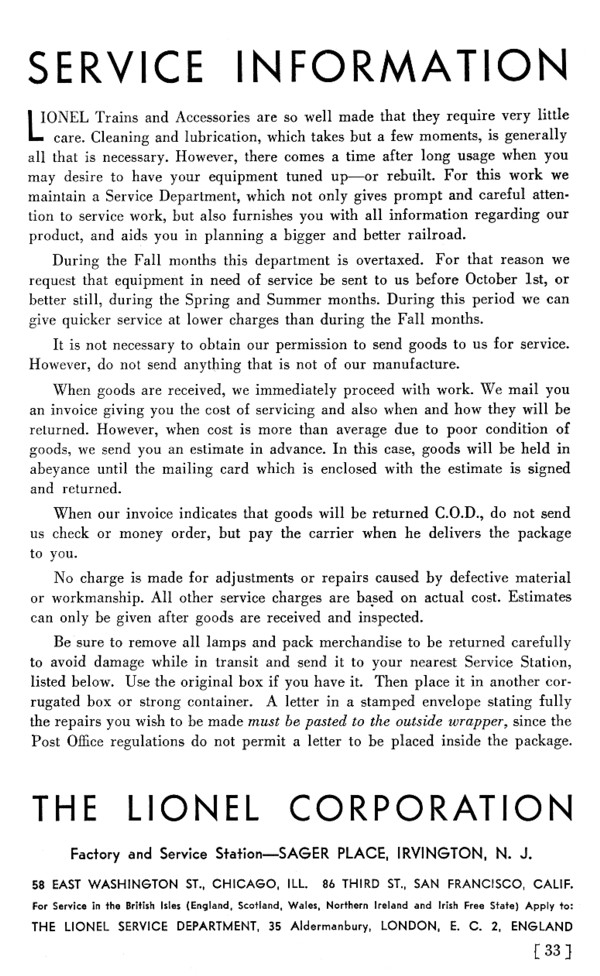
Service information from Lionel's 1938 Edition of their Instructions for
Assembling and Operating Lionel Trains booklet.
In time as sales continued to increase, it apparently became clear that Lionelís three Service Stations could not efficiently handle all of the service needs of the products they sold. Lionel began assembling service information that would be helpful to those repairing Lionel trains [1]. This was technically not a manual but a collection of service bulletins which began in November of 1938. In these initial bulletins, Lionel made clear its intentions to organize service and repair facilities on a nation-wide basis and appoint Approved Service Stations. Although many sellers of Lionel trains also repaired them, Lionel began a program to qualify and recommend those who could be relied upon to properly handle repairs. Lionel announced that it would furnish factory training in the form of complete information and electrical data on all Lionel equipment so that all employees of these Service Stations would be qualified to render thorough and intelligent service.
Lionel published a separate list of Approved Service Stations in 1939 for the years 1939-40. In one edition of the 1940 version of the instruction booklet Lionel announced that they also had Approved Service Stations in all principal cities in the United States and Canada. Customers were encouraged to use a local Approved Service Station when parts or repairs were necessary.
Lionel continued to issue service bulletins in 1939. Although these initial bulletins were not as organized or complete as the postwar manual would be, they did contain much useful information. In the remaining prewar years, Lionel issued many Service Bulletins covering specific topics.
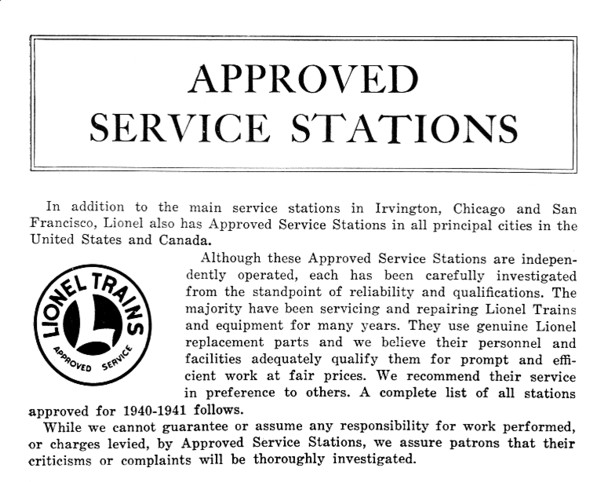
A 1940 edition of the booklet announced the addition of Approved Service
Stations.
Repairing trains was generally not a topic for discussion in Lionelís consumer catalogs. Though the introduction of Approved Service Stations was mentioned in the instruction booklet of 1940, the list was omitted when the 1940 manual was reprinted in 1941. Service Stations were not mentioned in the consumer catalogs of the day. Beginning in 1949, a current list again appeared in the instruction manuals and in 1957, Lionel began including the list in the accessory catalogs that accompanied sets or, as Lionel referred to them, outfits. Separate flyers listing the Approved Service Stations were also printed and probably included with sets.
After World War II, Lionel excelled at providing Approved Service Stations with information and diagrams to aid them in making repairs. Lionel continued its diligence with its service manual until the early 1960s. In the February 1961 Service Bulletin (included in the bonus section of this archive), is a note commenting that, ďWe do not know whether we will ever catch up with ďexplodedĒ parts pages. . .Ē Lionel did in fact make considerable additions to the manual in 1961 and 1962. By the end of 1962 however, most of the additions were merely parts lists with prices. One of the last additions that contained a pictorial was the No. 3357 Cop and Hobo Car. Although this included a pictorial, there was no accompanying text discussing any service problems with the car. We know of course that after 1962, Lionelís emphasis on trains began to diminish. The 1963 catalog contained no new items that required new molds. There were additions to the manual, although only parts lists, as late as 1966. While there may be others, I could not find any.
Lionelís Service Manual was a valuable tool for Approved Service Stations. In addition to exploded diagrams which visually identified part numbers, there was often considerable text to explain repairs and help the repairman diagnose problems. It is doubtful that any other toy company provided such extensive help to its vendors. Lionelís chief competitor in the postwar period was Gilbertís American Flyer Line. Gilbert also provided a service manual, but it did not compare in detail with Lionelís.
Lionel was proud of the reliability of its products. Nevertheless, in a December 1950 interview published in Collierís Magazine, in which Joshua Cowen spoke with pride about the durability of his product, son Lawrence had a tendency to worry about turnover. Was the product built too well?
Lionelís Postwar Service Manual remains a valuable tool for anyone servicing Lionel trains and to this day continues to be an important resource in documenting variations and changes to many of Lionelís products.
Lionel organized its service manual into specific sections. Locomotives for example, were in a section designated as LOC. Transformers were in a section labeled PS, short for power supply. In organizing this digital version, we have used the same designations as Lionel used. These sections are divided into binders on the home page.
Using the Lionel Postwar Service Manual Digital Archive
Finding a particular item is made even more convenient in this digital version, thanks to the search features offered by a computer. This search function allows you to locate a particular product in several ways. For example, suppose you have a locomotive with the cab number 665. You could simply go to the locomotive binder and scroll down the numerical list. Items within each section are for the most part listed in numerical order.
Suppose you had an item number and did not know in which section to look. To search the entire manual, rather than a specific section, simply open the Master Index binder. Then using the search function in your browser you can search the entire manual by either number or description. For example, if you were looking for item number 6460 and had no idea what the item was, simply follow these steps:
- From the home page, click on the Master Index binder.
- In the top menu bar, click on Edit and then Find. If you are using Internet Explorer, the Find box will open just above the page you are viewing. With Mozilla Firefox, the Find box will open at the bottom left of the screen.
- Enter the number you are looking for (in this case 6460). You can also enter a text description for your search (i.e. Gang Car).
- You can then click on Next to search for another match to your search criteria.
The Lionel Postwar Service Manual was made up of hundreds of documents most of which consisted of multiple pages. The service manual was not a document published in its entirety at any point in time. Updated sections and pages were distributed over time and it was up to the individual Service Station to place them in the appropriate section of the manual. Lionel often issued replacement pages to add additional information to existing entries. In these cases, we have included the latest version. In other cases, information on newer versions of an item did not replace the original, but contained information regarding changes in the newer version. In those cases we have done the same and included both versions. Although every effort has been made to develop a complete and thorough Lionel Postwar Service Manual Digital Archive, an update option has been made available. If we discover major omissions or corrections, we will provide updates via the HSL web-site (please see the Revisions button on the home page). You must be connected to the Internet to access these updates. They are provided free of charge as part of this archive.
Revisions
Bill Schmeelk
Footnote:
[1] Although this archive deals only with Lionel's Postwar Service Manual, an archive of the prewar service bulletins, instruction sheets, and parts lists is available from Bob Osterhoff at www.trainpaper.com.
We would like to thank Bob Osterhoff, Ray Fetzner, and Glenn Patsch for their assistance with this archive. Through their efforts and generous use of material, we were able to provide a more complete product.
Acknowledgements
Thanks also to Lionel for allowing us to develop this digital archive! Through these authorized and licensed digital archive products, Lionel fans are able to have easy access to great historical information!
John H. Holtmann, Jr.
Lionel Postwar Service Manual Digital Archive Product Co-Author
HSL
The Lionel Service Manual contained its own introduction. The following page is from 1956.
Lionel Service Manual Introduction
